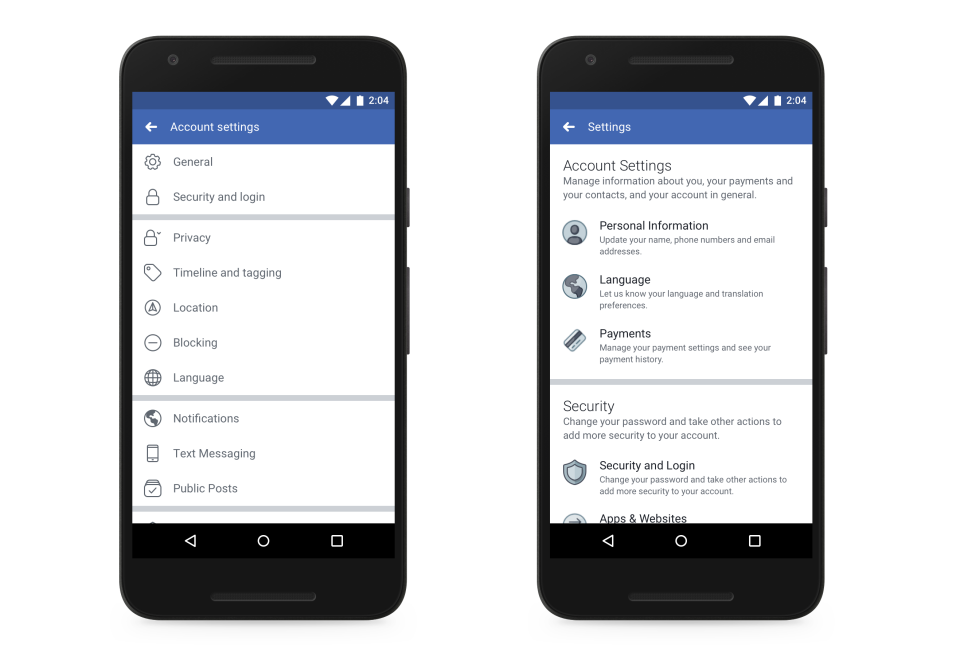By Erin Egan, VP and Chief Privacy Officer, Policy and Ashlie Beringer, VP and Deputy General Counsel
Last week showed how much more work we need to do to enforce our policies and help people understand how Facebook works and the choices they have over their data. We’ve heard loud and clear that privacy settings and other important tools are too hard to find and that we must do more to keep people informed. So in addition to Mark Zuckerberg’s announcements last week – cracking down on abuse of the Facebook platform, strengthening our policies, and making it easier for people to revoke apps’ ability to use your data – we’re taking additional steps in the coming weeks to put people more in control of their privacy. Most of these updates have been in the works for some time, but the events of the past several days underscore their importance.
Making Data Settings and Tools Easier to Find
Controls that are easier to find and use. We’ve redesigned our entire settings menu on mobile devices from top to bottom to make things easier to find. Instead of having settings spread across nearly 20 different screens, they’re now accessible from a single place. We’ve also cleaned up outdated settings so it’s clear what information can and can’t be shared with apps.

New Privacy Shortcuts menu. People have also told us that information about privacy, security, and ads should be much easier to find. The new Privacy Shortcuts is a menu where you can control your data in just a few taps, with clearer explanations of how our controls work. The experience is now clearer, more visual, and easy-to-find. From here you can:
- Make your account more secure: You can add more layers of protection to your account, like two-factor authentication. If you turn this on and someone tries to log into your account from a device we don’t recognize, you’ll be asked to confirm whether it was you.
- Control your personal information: You can review what you’ve shared and delete it if you want to. This includes posts you’ve shared or reacted to, friend requests you’ve sent, and things you’ve searched for on Facebook.
- Control the ads you see: You can manage the information we use to show you ads. Ad preferences explains how ads work and the options you have.
- Manage who sees your posts and profile information: You own what you share on Facebook, and you can manage things like who sees your posts and the information you choose to include on your profile.

Tools to find, download and delete your Facebook data. It’s one thing to have a policy explaining what data we collect and use, but it’s even more useful when people see and manage their own information. Some people want to delete things they’ve shared in the past, while others are just curious about the information Facebook has. So we’re introducing Access Your Information – a secure way for people to access and manage their information, such as posts, reactions, comments, and things you’ve searched for. You can go here to delete anything from your timeline or profile that you no longer want on Facebook.
We’re also making it easier to download the data you’ve shared with Facebook – it’s your data, after all. You can download a secure copy and even move it to another service. This includes photos you’ve uploaded, contacts you’ve added to your account, posts on your timeline, and more.

The Road Ahead
It’s also our responsibility to tell you how we collect and use your data in language that’s detailed, but also easy to understand. In the coming weeks, we’ll be proposing updates to Facebook’s terms of service that include our commitments to people. We’ll also update our data policy to better spell out what data we collect and how we use it. These updates are about transparency – not about gaining new rights to collect, use, or share data.
We’ve worked with regulators, legislators and privacy experts on these tools and updates. We’ll have more to share in the coming weeks, including updates on the measures Mark shared last week.
